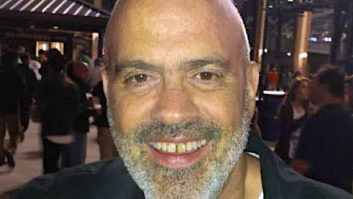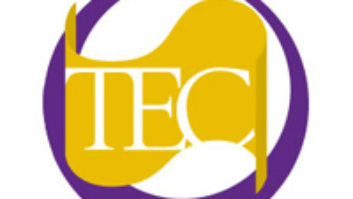There was something for almost everybody on the marathon 45th Annual Grammy Awards telecast, held February 23 at New York City’s Madison Square Garden. With music spanning six decades and a dozen different genres, the program offered numerous sensational performances and unusual pairings: The stark, poignant opening with Simon & Garfunkel singing their classic “The Sound of Silence”; the Dixie Chicks’ haunting version of Stevie Nicks’ “Landslide”; Faith Hill, looking like an escaped go-go dancer from a ’60s nightclub, sounding surprisingly raw and real as she belted out “Cry”; Kid Rock and Sheryl Crow rockin’ together; the New York Philharmonic’s explosive selection from Leonard Bernstein’s West Side Story (as well as their dramatic union with Chris Martin and Coldplay); Yo-Yo Ma and James Taylor dueting marvelously on “Sweet Baby James”; Eminem fronting The Roots on his hit from 8 Mile; *NSync sounding sweet and soulful on a medley of Bee Gees tunes to honor the late Maurice Gibb; Bruce Springsteen & The E Street Band reprising their post-9/11 anthem “The Rising”; Springsteen, Elvis Costello, Steven Van Zandt and Dave Grohl fronting a kick-ass group for a stirring tribute to fallen Clash leader Joe Strummer; and, of course, fine live renditions of last year’s ubiquitous hits by Norah Jones, Nelly, Avril Lavigne, John Mayer and others.
The awards themselves — the bulk of which were handed out in a ceremony before the telecast — covered a broad spectrum of artists and styles; it only seemed as though Norah Jones won everything! For a complete winners list, as well as dozens of great onstage and backstage photos, go to www.grammy.com.
But as has become our tradition, we take a moment now to salute some of the technical winners — engineers and producers — and talk about the projects that brought them those coveted gold gramophones.
Album of the Year and Best Engineered Album, Non-Classical: Norah Jones’ Come Away With Me. Produced by Arif Mardin; engineered by Jay Newland and Husky Huskolds; mastered by Ted Jensen. Producer of the Year, Non-Classical: Arif Mardin. Record of the Year: Norah Jones’ “Don’t Know Why” (Mardin; Newland; Jensen).
When legendary producer Arif Mardin was given a special Lifetime Achievement Award at the Grammys two years ago, he was worried “that it means that you’ve done your best work and you’re on the other side of your career.” So winning this year for his work on newcomer Norah Jones’ album was particularly sweet.
Mardin says that he was brought onto the project by Blue Note Records president Bruce Lundvall after Lundvall was dissatisfied with some initial sessions completed by Jones and her band. At first, Jones was understandably intimidated to work with the man who made hit after hit with Aretha Franklin, Chaka Kahn, Bette Midler, the Bee Gees and countless others. “But we had a meeting, and I said, ‘Look, I’m working for you. It’s your record. It doesn’t matter what I’ve done. It only matters what you’re going to do.’
“So in August 2001, in a very pleasant three weeks, we finished almost the whole album at Sorcerer Sound [in New York City], mostly recording live,” Mardin says. “Then in October, we did the finishing touches, mixed it [at Sear Sound on a custom Avalon console] and then it was mastered at Sterling by Ted Jensen.”
“The approach was pretty organic,” adds engineer Newland, “sort of like a jazz record, although it’s not really a jazz record. It does have the upright bass and the quiet drums and the acoustic piano — it has the elements of a jazz record — but it has a pop and singer/songwriter feel to a lot of it. She plays and sings with the band [when she’s recording], and a lot of those are the keeper takes, vocally.”
Newland says that the album was cut in Sorcerer’s smaller upstairs room on the custom Acoustilog console to a Studer 2-inch analog machine. “When they first hired me, they hired me to do the demos and we did 13 songs in two days; we mixed them in like two hours. The take of ‘Don’t Know Why’ that won the Grammy actually came from the demo session, which was one take. She sang it so beautifully; it held up and that was it. I think we added a harmony voice and a second guitar, and that’s all.”
After some experimentation, Jones’ vocal was cut on a Neumann M49 mic. “It was magic the second we tried it on her voice,” Newland says. Mic pre’s on Jones and the band included Neve and Manley models.
Mardin has signed on to produce Jones’ next album, and the material is apparently already written and ready to go.
Classical Producer of the Year: Robert Woods
Telarc producer Robert Woods practically owned this category in the 1980s, winning the award in 1980, ’82, ’85 and ’87 through ’89, but this is his first victory since then. “I was very fortunate in the ’80s, because I had a lot of success with various crossover [classical/pop] albums, and I was very early getting on the bandwagon for the digital recording process, and I guess I became sort of associated with that in some people’s minds.”
He’s still making albums that draw both hardcore classical fans and more casual pop-classical listeners. He earned this year’s Grammy for a wide range of recordings, including A Celtic Spectacular, which brought together the Cincinnati Pops Orchestra with The Chieftains, James Galway and others; Scary Music, another Cincinnati Pops “theme” production; the L.A. Guitars Quartet’s Latin album; the Cincinnati Symphony’s take on Sibelius’ Symphony #2; and Sounds of Glory: Hymns of Faith and Adaptation.
Telarc CDs have always been known for their exceptional fidelity, and now the company is jumping with both feet into the world of surround sound: All of Telarc’s current classical productions are recorded both in conventional stereo and in the SACD format, with hybrid releases; in fact, the LAGQ Latin album was also a winner at last fall’s Surround Awards. “That’s a beautiful-sounding album,” Woods notes. “It was made with four close-up mics for the detail and four mics above to capture the room in its dimensions — a nice combination of perspectives.”
A week after the Grammys, Woods was still basking in the afterglow of his triumph: “It’s the only time I’ve actually brought my family to the ceremony, so I had my 16-year-old son and my 19-year-old daughter with me. Really, the most rewarding thing about it is being a parental hero — even if it’s short-lived!” he says with a laugh.
Best Engineered Album, Classical:Vaughan Williams’ A Sea Symphony; Atlanta Symphony Orchestra and Chorus (Robert Spano conductor/Norman Mackenzie choir director); produced by Thomas C. Moore; engineered by Michael Bishop.
This album, which features the words of American poet Walt Whitman set to British composer Vaughan Williams’ music, was a triple victory for Telarc, also picking up trophies for Best Classical Album and Best Choral Performance. Engineer Bishop says that everyone involved in the recording knew that they were on to something special from the beginning: “It’s an extraordinary performance; it’s obvious right from the very opening bars of the music,” he says. “And as soon as the chorus opens their collective mouths, it’s really something. We all got goose bumps. It’s just such a beautiful work.”
It was recorded simultaneously in surround and stereo at the Woodruff Performing Arts Center in Atlanta (home of the Atlanta Symphony) in three-hour sessions. “It was recorded to a Sonoma workstation with Genex 8500s as backup,” Bishop reveals. “We had EMM Labs converters, and the main mic pickup for the front of orchestra was the Neumann binaural head KU-100. We had Sennheiser MKH20s as the flanking mics and more Sennheiser MKH Series mics used in the surround pickup; then across the front of the chorus was the B&K DPA 4023 miniature cardioids. We also had four MKH 20s for pickups of the two soloists.”
Although obviously thrilled with having won the Grammy, Bishop says, “The biggest honor for me is just having been there for this performance of this particular piece because it was absolutely magical. [Producer] Tom Moore worked everyone very hard. He demanded a lot from the orchestra and the singers because he knew they could deliver a lot. And we were recording in the day and they were also performing in the evening, so it was a lot of singing and playing. But they really gave their all and it was obvious on the finished album.
Remixer of the Year: Roger Sanchez for No Doubt’s “Hella Good.”
2003 Technical Grammy Award: Geoff Emerick
Fresh from his induction in the TEC Hall of Fame (see the October 2002 Mix), the man who engineered The Beatles’ late-’60s albums, as well as works by many other top artists, gets another well-deserved honor.
2003 Technical Grammy Award: Shure Inc.
Kudos to the venerable microphone manufacturer, in business since 1925, and still making some of the best and most popular microphones in the world.


